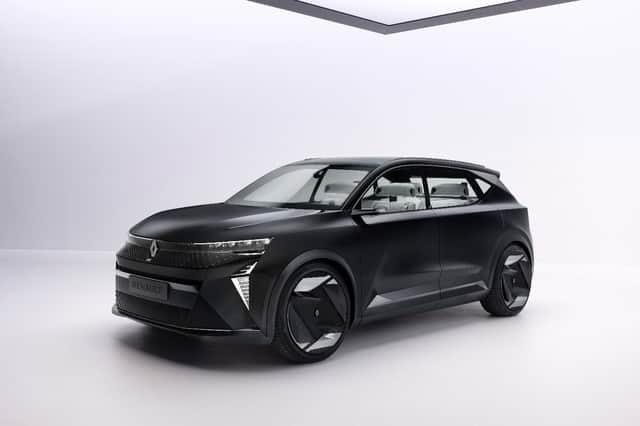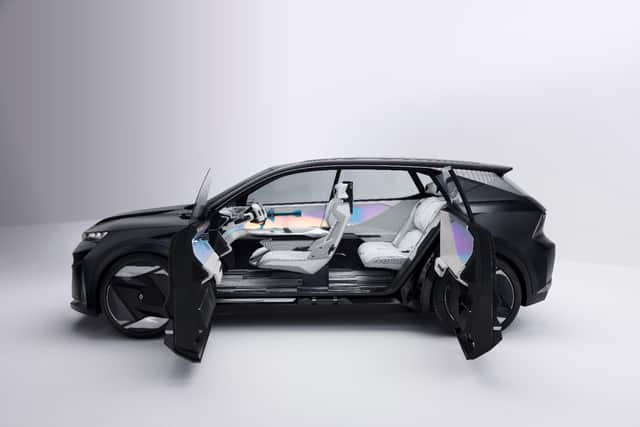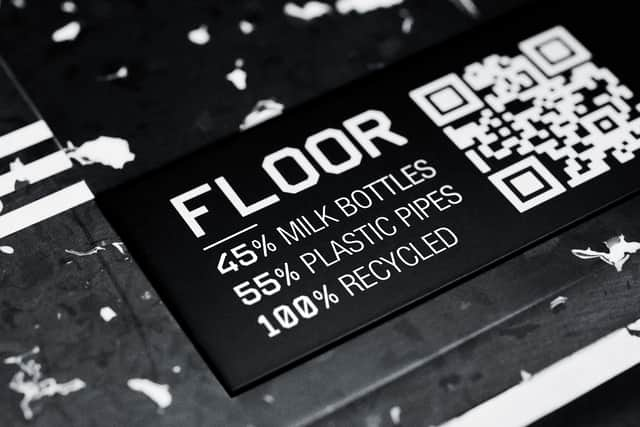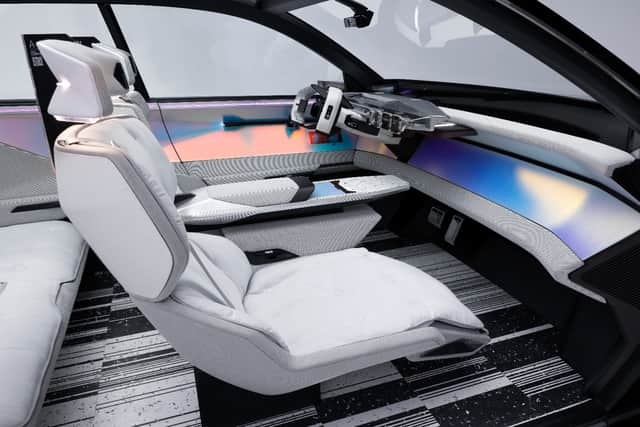Renault Scenic Vision concept previews electric/hydrogen hybrid and new direction for MPV name


Renault will re-introduce the Scenic name — made famous by the French carmaker’s small MPV — when it introduces a new all-electric family-sized SUV, due to arrive in 2024.
The brand has given an indication of how the new model will look with a first glimpse at the Scenic Vision Concept, which also gives an insight into its wider design and drivetrain plans.
Advertisement
Hide AdAdvertisement
Hide AdAccording to lead designer Gilles Vidal the exterior of the Scenic Vision represents “more than 90% of how the production car will look”.
While the interior is pure concept car indulgence, the powertrain technology is more a preview of what Renault thinks it could offer commercially post-2030 and that means a combination of electric and hydrogen power. The concept also hints at a more sustainable manufacturing process - it is made from 70% recycled materials, while 95% of the whole vehicle can be recycled at the end of its lifespan.


Electric and hydrogen: really?
Definitely. But let’s take one step at a time. The Scenic Vision Concept uses a bespoke platform. So far so good. But when the production car arrives in 2024, it will sit on the CMF-EV system used by the smaller Megane E-Tech Electric and larger Nissan Ariya.
What does that mean? Well it’ll be fully electric and house batteries batteries up to 90kWh in size; that would equate to a maximum range of over 300 miles on a full charge based on the specs of the Ariya.
Advertisement
Hide AdAdvertisement
Hide AdBut remember, the concept isn’t just intended to reflect what powertrain will be on sale in two years. Rather it gives us an insight into the next decade.


In “Renault World” that means a one-of-a-kind hybrid powertrain which will use both battery electric and hydrogen fuel cell technology delivering drive to a rear-mounted electric motor rated at 215bhp. In simple terms — and very simple terms — it’s a range-extender using a compact hydrogen fuel cell to recharge the car’s battery, instead of a small petrol engine.
It’s a unique concept and, effectively, Renault has devised what could be labelled a fuel cell vehicle, but one with differently proportioned electric and hydrogen elements. The 40kWh battery is the same as the one used in the short-range version of the Megane E-Tech electric and is positioned beneath the front part of the floor.
Importantly, it holds a much larger charge than the small batteries usually used in fuel cell cars, but crucially it’s around half the size and weight of a battery used in a typical long-range EV on sale in showrooms today.
Advertisement
Hide AdAdvertisement
Hide AdSignificantly, while it can obviously be directly recharged by plugging in at a charging point, it is also supported by a 15kW fuel cell in the rear half of the floor which allows for top ups away from the charging plugs. The fuel cell itself is fuelled by a high-pressure tank under the bonnet. In turn, this tank is smaller and lighter than in a conventional fuel cell powered car. That makes it much easier to package. Tipping the scales at 2.5kg, the tank is half the weight of that used to fuel the hydrogen-powered Toyota Mirai.
But we’re talking hydrogen …
We are. And as we know, at the moment there isn’t a comprehensive hydrogen filing network which covers the UK and Europe. But it certainly shows the way Renault believes future powertrains could well be fuelled.
Renault says a powertrain such as this would deliver a 500-mile range, with only a five-minute stop to refill the hydrogen tank. As for the battery, it wouldn’t need to be charged because the fuel cell can recharge the pack on the move. Clever stuff.
… and re-intoducing the Scenic badge
Again, yes we are. The Scenic name fast-tracks us back in time to the 1990s and the height of the popularity of MPVs. When it was first launched in 1996, the Scenic was in essence a smaller five-seat version to its Espace sibling. And it was a massive, surprise hit. So much so, it reality it was THE car of the time.
Advertisement
Hide AdAdvertisement
Hide AdOf course, as we know the MPV segment has plummeted in recent years, so much so the Scenic name was taken off-sale in the UK in 2020 altogether.
Two years from now when the Scenic name returns it will be linked to a C-segment SUV which Renault claims will be aimed at families and their “changing needs”.
Compared to a Volkswagen ID.4, it’ll be a little bit shorter measuring 4,490mm in length. That also makes it a tad longer than a Mercedes EQA. The Scenic Vision currently enjoys a wheelbase of 2,835mm, which is 200mm longer than the combustion powered Austral SUV which the Scenic will sit next to in the range. What that also confirms is the interior space within the 2024 Scenic will be generous for the car’s external size.
And we have to remember the Scenic Vision is a concept design. Though it follows the traditional two-box design, the concept has been fitted with rear-opening suicide doors and sees the deletion of the B-pillar. Quite whether those will make it to full production would appear unlikely. And of course, it sits on massive 21-inch aerodynamic wheels.
Advertisement
Hide AdAdvertisement
Hide AdWhat about the interior?
Pretty impressive, isn’t it. Access to the four-seat interior of the Scenic Vision is done by pressing a touch-sensitive Renault logo panel where the B-pillar should be. Sustainability is what the interior is all about, highlighted by the materials used and the composition of the floor; the latter is made from 100% recycled plastics from food packaging and industrial waste.
Not surprisingly, no leather is used in the cabin, simply due to Renault’s focus on recycled materials. White is the dominant colour, a direct result of the elimination of dyes in the fabrics, which in turn are made entirely from recycled plastics.


Of course, there is colour in the cabin, but this is created by the use of dichroic panelling. This has the ability to split light into distinct beams of different wavelengths. The result creates a natural rainbow-like pattern of colour that shifts depending on the angle it is viewed from.
The concept SUV also uses facial recognition software which will automatically readjust the seat positions, infotainment preferences, music and more as soon as it identifies the driver and passengers entering the car.
Advertisement
Hide AdAdvertisement
Hide AdAnd in place of the now traditional single large central touchscreen, the Scenic Vision features four ‘widget’ style small screens which are totally customisable. There’s also a display in the centre of the steering wheel. In fact, Renault says there are 10 ‘widget’ displays dotted around the cabin to control various functions.
Comment Guidelines
National World encourages reader discussion on our stories. User feedback, insights and back-and-forth exchanges add a rich layer of context to reporting. Please review our Community Guidelines before commenting.